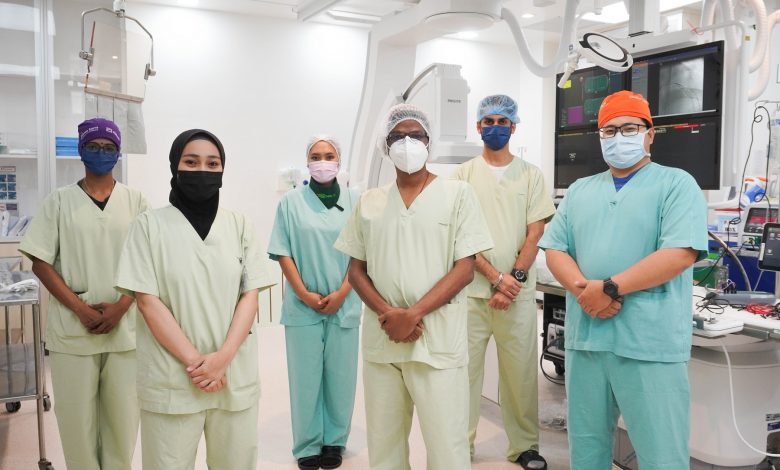

Perak Community Specialist Hospital (PCSH) has yet again made another achievement by successfully performing an electrophysiology study and ablation. A 42-year-old patient presented with a very high burden of ventricular ectopics—a medical condition whereby there is an extra focus of heartbeat arising from the ventricles.
The patient was initially managed with medications prescribed by Resident Consultant Interventional Cardiologist, Dr Ng Seng Loong. There was no improvement, and she was then referred to this highly specialised procedure.
Arrhythmias are abnormal conductions in the heart rhythm that can lead to complications such as syncopal attacks and heart failure. This condition is usually treated medically but would require intervention if it doesn’t improve or worsens.
The electrophysiology study and ablation were indeed a success using state of the art 3D mapping technology and under the expert hands of Visiting Consultant Cardiologist and Electrophysiologist, Dr Saravanan Krishinan.
An Electrophysiology study (EPS) and radiofrequency ablation (RFA) procedure is a treatment choice for patients with heart rhythm disorders like SVT, or better known as Supraventricular Tachycardia.
Patients usually experience palpitations (rapid heartbeat or a pounding sensation in the chest), dizziness, chest discomfort or breathlessness. Some may even faint when it occurs. The symptoms may be sudden and last for a short period. In some cases, the symptoms last a little longer. This may occur at any age. To identify the specific cause of the symptoms, patients are required to go through an Electrocardiogram (ECG) upon the procedure, which subsequently leads to EPS for diagnosis and treatment. EPS assesses the heart’s electrical system or activity and is used to diagnose abnormal heartbeats or arrhythmia.
The benefits expected from the procedure includes curing of the palpitation. Three to four catheters, also known as “electrical cables”, are inserted via the vessels in the groin under fluoroscopy or a 3D mapping system and the stimulation is performed to reproduce clinical arrhythmia. Once the site of the arrhythmia circuit is identified, the ablation is done briefly and the response is assessed.
Patients are required to stay for a duration of one to two days in the hospital as these complications may be treated without an operation. In this case, the patient was discharged the following day after she recovered well and displayed no side effects from the procedure.








